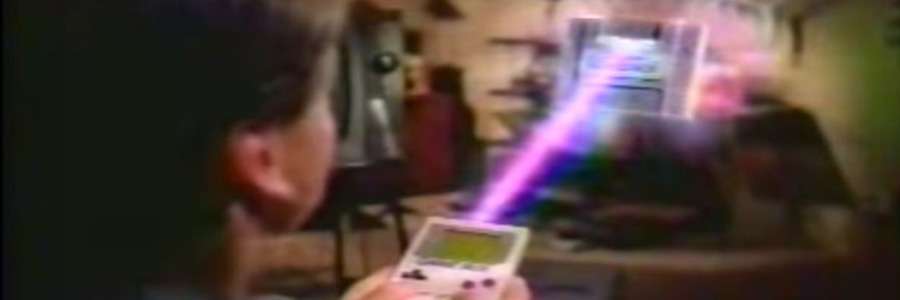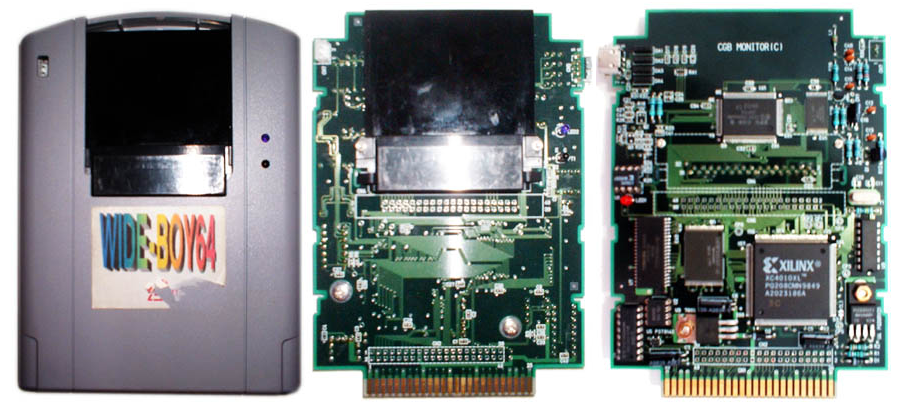
Historical Hardware: Super Game Boy’s Brothers and Sisters
This is the first publication of my new column, Historical Hardware! In this column I dive into a sea of old, obscure video game tech that you may not have heard of and if you have maybe you will learn something new along the way!
Today we can throw our phone screens onto a television with Chromecast and Apple TV’s airplay with ease. They aren’t the first devices to allow mobile screens to be viewed on a larger area though. Nintendo released an add-on to their Super Nintendo back in 1994 called the Super Game Boy that also did something similar. Whether you didn’t own a Game Boy or staring at that small, unlit screen for hours was too straining, the Super Game Boy was a great option for people to play their Game Boy games on a bigger screen. It could change colors for games that didn’t have the option to originally, which could change the tone of the game, it added borders to games, some that could even be customized and some games even had their sound effects enhanced by the Super Nintendo’s hardware. It was a great option for a lot of people, but I am not here to write about the Super Game Boy, today’s focus is on all of the products that predate, assist and follow Nintendo’s add-on.

A Wide-Boy 1
Before the Super Game Boy was released there was a similar piece of hardware that connected to a Famicom called the Wide-Boy. Created by Intelligent Systems, the Wide-Boy was produced so that developers did not have to stare at gameboy screens while developing their games and also for journalists to take screenshots of games. There have been four different models of the Wide-Boy recorded, Wide-Boy 1-3 and 64. The most common Wide-Boys that are found on the internet are typically Wide-Boy 3’s or the Wide-Boy 64s. While the Super Game Boy was designed to be sleek and clean with the consumer in mind, the original Wide-Boys were essentially circuit boards with a piece of black plastic covering them and top-loading pin connectors on the bottom of the circuit board. These Wide-Boys did have some color options, but they were mostly basic color hues.
The Wide-Boy 64 was very different from the last three models of the Wide-Boy because it was more compact and it looked very similar to the Super Game Boy. If you have never seen a Wide-Boy 64 you may mistake it as a third-party accessory that was made for the Nintendo 64, especially if you miss the Intelligent Systems logo on the bottom right. The font on it looks like someone quickly typed something in a computer program, printed it on a sticker and slapped it on the hardware. This iteration of the devkit could play all games that had the Game Boy name on it, original, Color, or Advance. It allowed the player to zoom into the screen with the analogue stick, almost ignoring the border that all Wide-Boys and the Super Game Boy had. It also had the option to switch hardware interpolation on and off, this means that you could take the expanded image and the Wide-Boy 64 would create new pixels to fill in and make it look more crisp.
The Wide-Boys are the only pieces of hardware in this article that were not produced for retail, after the Super Game Boy, the market for handheld games on the television screen opened up. With the release of Pokemon, handheld connectivity blew up in a way that was not expected. Players were competing in Wario Blast and beating up bad guys in Double Dragon but Pokemon was a completely different beast. The Super Game Boy 2 launched in a translucent violet color, similar to the Game Boy Color, with almost all of the hardware similarities of the original Super Game Boy except that it had a Game Link Cable port and two colored LEDs that were green and red. The Super Game Boy 2 has become known among the collecting community because it plays games at the proper speed while the original Super Game Boy had small timing problems. It also had a different theme than the original Super Game Boy, what used to be a horn-focused tune with crazy flutes and other instruments was now a thumping rock tune with xylophones. The folks at tcrf.net have also found a load of other cool things such as unfinished settings, sound functionality and custom borders that can be found by setting RAM and ROM addresses to different numbers.

The Japanese box art for the Super Game Boy 2
The Super Game Boy original theme
The Super Game Boy 2 theme
During the time that the Super Game Boy was popular, there was a controller released for those who just couldn’t become accustomed to the Super Famicom’s controller layout. Enter the Super Game Boy Commander, a controller made for specific use with the Super Game Boy produced by Hori. The color scheme is themed to look similar to the original gameboy colors, there is no X or Y button, instead they are replaced by speed and color buttons. These buttons did not do anything exclusively different in comparison to other controllers, you could change the hue, border and speed of a Game Boy game with a regular controller but the Commander was designed with the options in front of the mind. The two things that the controller did have that was different from the regular first party controller though, was a faux speaker vent on the front of the controller and a switch that will change the buttons from Super Game Boy functionality to Super Famicom functionality.
After the Super Nintendo, the options for playing Game Boy on a larger screen was not as accessible on the Nintendo 64. Instead, the system received an accessory called the Transfer Pak which plugged into the bottom of the controller and was primarily designed for players to transfer Pokemon between their Game Boy titles and the N64 Pokemon Stadium games. In the Stadium games there was also a mode called GB Tower which was where people could play the original Pokemon titles on the Nintendo 64 via emulation. There were other games that were compatible with the Transfer Pak such as Mario Golf, Mickey’s Speedway USA and Perfect Dark, but these games simply made it so that content bonuses could be unlocked.

The original box art for the Nintendo 64 Transfer Pak

A Nintendo Gamecube attached to a Game Boy Player
The last option that Nintendo released so that Game Boy games could be played on a television was the Game Boy Player for the Gamecube. The player was an accessory that attached the bottom of the console and required a disc to play anything on it. Games could be played with a Gamecube controller but if you had a Link Cable that connected from Game Boy to GameCube then games could be controlled via Gameboy Advance system. Similar to the Super Game Boy, the Game Boy Player also had borders that could be added to the game, the button assignments could be changed and there were different color filters. It also could zoom in and out of the screen similar to the Wide-Boy 64, activate a timer and hotswap cartridges. Some have found that original Game Boy games look superior on the Super Game Boy and there has even been some work on creating different software to change how games look on the Gamecube.
We are only now seeing some similar treatment to handheld games with hardware like the Playstation TV and the Wii U’s DS virtual console but both of those options are incredibly limited or they don’t make entire sense. Playstation TV won’t allow you to play all of the games for the Vita, especially since it doesn’t have a touch screen that the Vita has (although some fans are working towards resolving that). The Wii U’s virtual console asks consumers to rebuy games that they may already own individually so that they can play them on their television screens. Looking back on the Super Game Boy and its family, there is a fondness in the idea of playing handheld games on the television but it is hard to say if we will ever see a similar product.
Want to learn more? Here are the sources where I found information for this article:
The Cutting Room Floor: Super Game Boy 1 and 2
Fuck the Super Game Boy Introduction
Feature: Remembering the Super Game Boy
